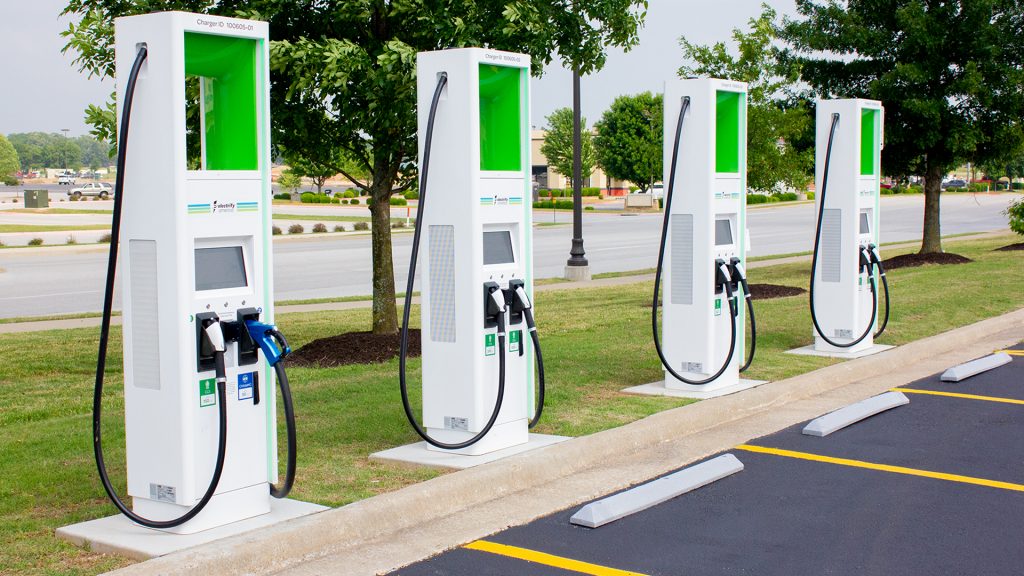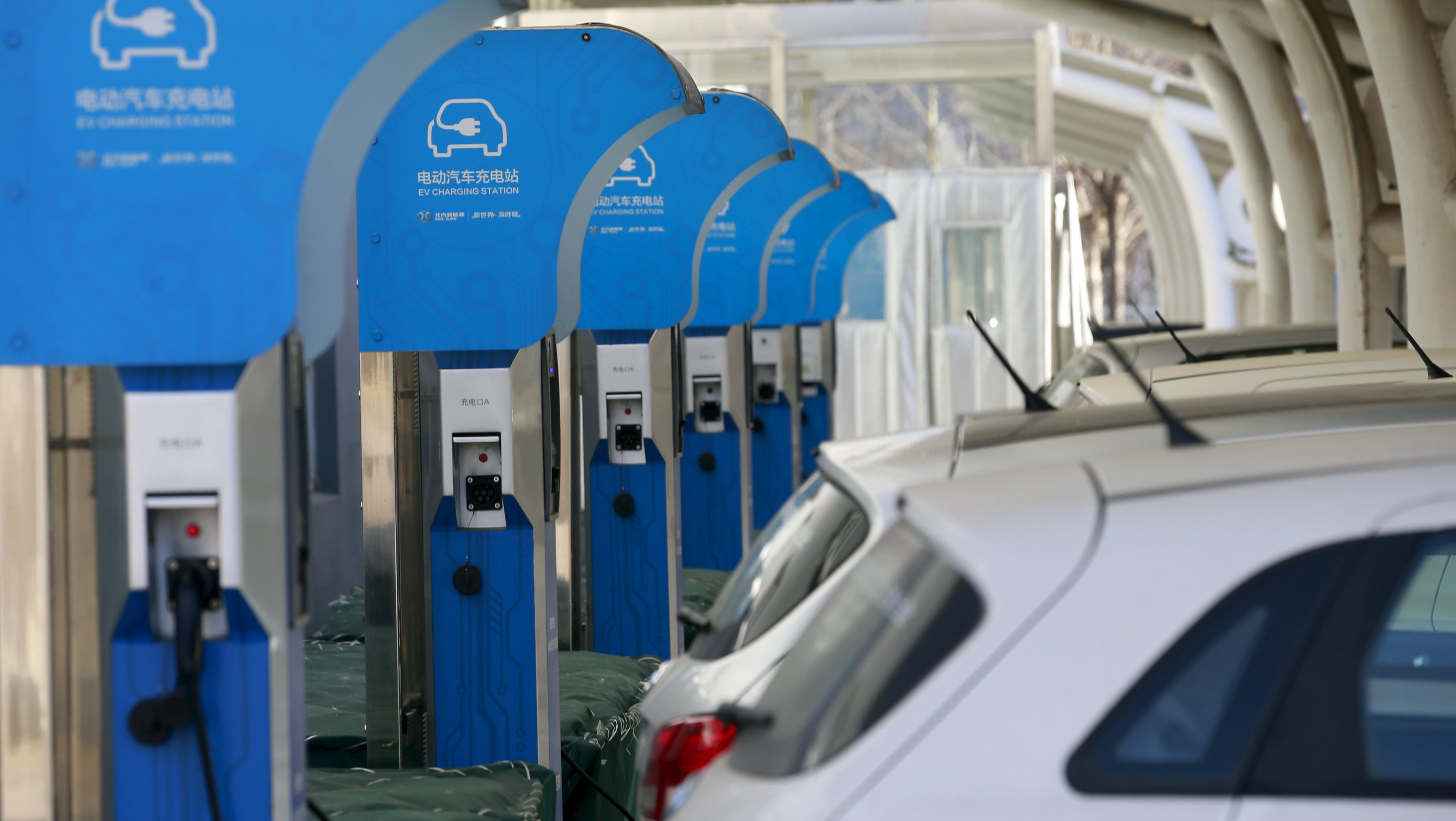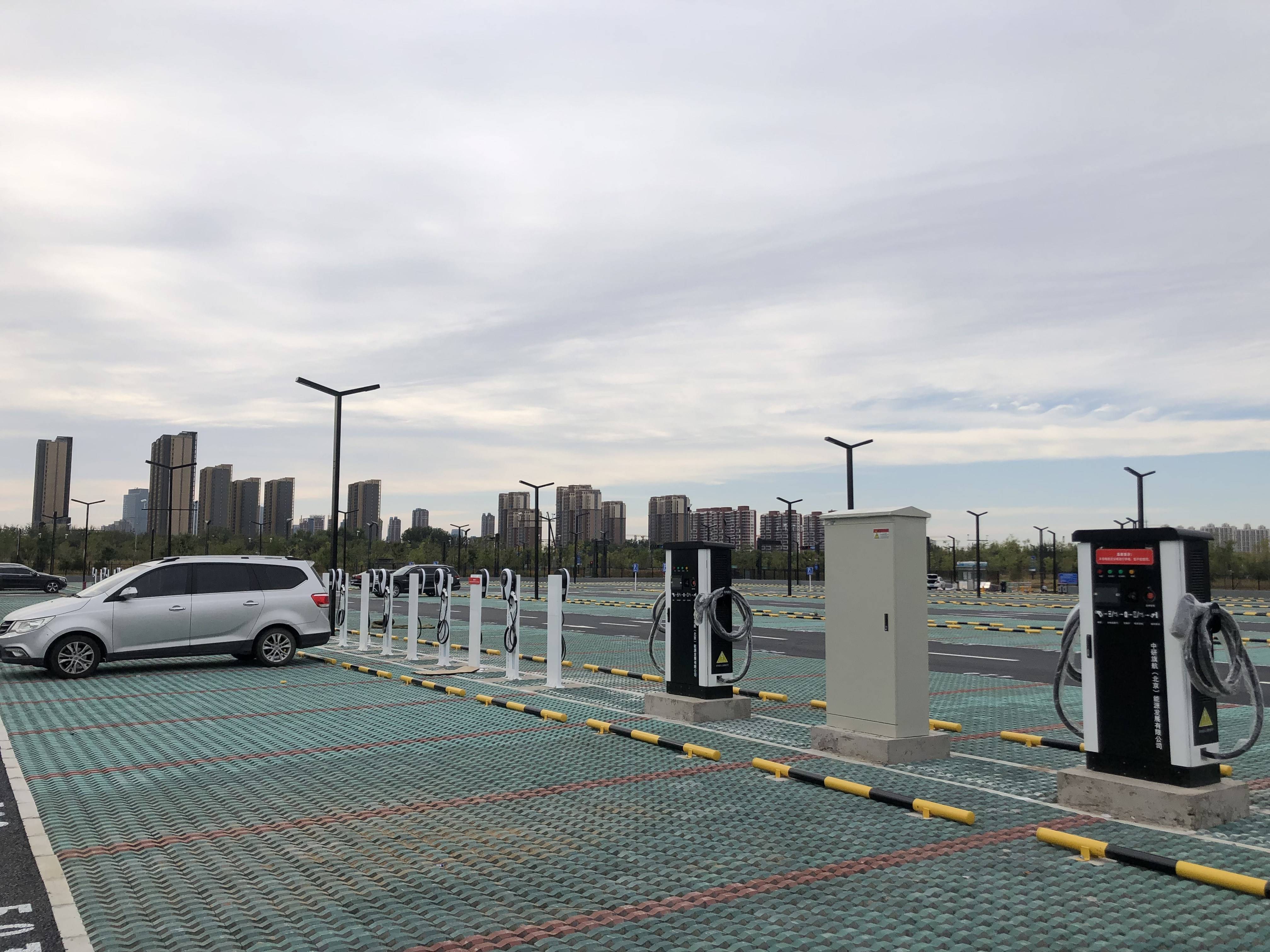Requirements for Building EV Charging Stations
The charging station of new energy electric vehicles has been included in the scope of new infrastructure by the National Development and Reform Commission. The charging pile has immediately risen to a national strategic height. From the perspective of future development trends, the strategic value of the charging pile will not only be a key infrastructure for the sustainable development of new energy vehicles, but also an indispensable new infrastructure for building the future vehicle network.
New energy vehicles are widely used, and charging stations have functions similar to gas dispensers in gas stations. They can be fixed on the ground or walls, installed in public buildings (such as public buildings, shopping malls, public parking lots, etc.) and residential parking lots or charging stations. They can charge various types of electric vehicles according to different voltage levels. The input end of the charging station is directly connected to the AC power grid, and the output end is equipped with charging plugs for charging electric vehicles. Generally, the charging pile provides two charging methods: conventional charging and fast charging. People can use a specific charging card to swipe the card on the human-computer interaction interface provided by the charging pile to print the corresponding charging method, charging time, cost data and other operations. The charging pile display screen can display the charging amount, cost, charging time and other data.

The construction of decentralized charging facilities requires the combination of user residential parking spaces, unit parking lots, public building parking lots, temporary parking spaces on the road, and other facilities to provide electric energy for electric vehicles, including the construction of charging equipment, power supply systems, supporting facilities, etc. The planning of decentralized charging facilities should be combined with the planning of distribution networks. Next, let me have a detailed understanding of the design requirements for building a decentralized charging station project?
(1) Planning Document Requirements
The type and scale of decentralized charging facilities should be planned in conjunction with the charging needs and parking space distribution of electric vehicles, and should comply with the following regulations:
(1) Newly built residential parking spaces should have 100% charging facilities or reserved construction and installation conditions;
(2) The proportion of parking spaces for large public buildings, charging facilities or reserved construction and installation conditions in social public parking lots should not be less than 10%;
(3) The existing parking spaces should be equipped with decentralized charging facilities, which should be reasonably planned and implemented step by step based on the charging needs of electric vehicles and the current situation of the distribution network.
(2) Site selection requirements for decentralized charging facilities
Decentralized charging facilities should comply with the following regulations:
(1) The location selection of decentralized charging facilities should fully utilize nearby public facilities such as power supply, fire protection, and flood prevention and drainage;
(2) The location selection of decentralized charging facilities should meet the requirements for facility power access;
(3) The site selection should not be close to places with potential fire or explosion hazards; When adjacent to buildings with explosion or fire hazards, it should comply with the current national standard "Code for Design of Electrical Installations in Explosive Atmospheres" GB 50058;
(4) Decentralized charging facilities should not be located in places with much dust or corrosive gas. When they cannot be far away, they should not be located at the downwind side of the prevailing wind direction of the pollution source;
(5) Dispersed charging facilities should not be located in places where there is a possibility of water accumulation;
(6) Dispersed charging facilities should not be located in places with severe vibrations;
(7) Distributed charging facilities should not be built in repair garages;
(8) Distributed charging facilities should be selected in areas with public communication network coverage;
(9) The site selection of decentralized charging facilities should be in a location that is easily accessible to firefighting and rescue forces.
(10) The layout of charging facilities should not hinder the normal passage of vehicles and pedestrians.
(3) Layout requirements for charging equipment in decentralized charging facilities
The arrangement of charging equipment should comply with the following regulations:
(1) Charging equipment should be reasonably arranged in conjunction with parking spaces to facilitate vehicle charging;
(2) The layout of charging equipment should be close to the power supply to shorten the path of the power supply line;
(3) For non vehicle mounted chargers with a split structure, the rectifier cabinet should be arranged close to the charging pile, and the end voltage drop should meet the charging requirements;
(4) The distance between charging equipment and charging parking spaces and buildings (structures) should meet the requirements of safety, operation, and maintenance; The clear distance between the outer contour of the charging device and the edge of the charging parking space should not be less than 0.4m.
When the charging equipment is installed in a floor mounted manner, it should comply with the following regulations:
(5) The foundation of indoor charging equipment should be 50mm above the floor, and the foundation of outdoor charging equipment should be 200mm above the floor;
(6) The equipment foundation should be no less than 50mm larger than the length, width, and overall dimensions of the charging equipment;
(7) A separately installed charging connector, when immersed in water under normal conditions, should meet normal use and the system insulation resistance should not be reduced, personal safety should not be affected, and its installation foundation can be level with the ground.
When the charging equipment is installed in a wall mounted manner, it should comply with the following regulations:
(1) It should be installed vertically on the wall perpendicular to the ground plane, and the wall should meet the load-bearing requirements. The charging facilities should be fixed and reliable;
(2) The installation height of the equipment should be easy to operate, and the horizontal centerline of the human-machine interface operation area of the equipment should be 1.5m above the ground.
(4) Layout requirements for electrical equipment of charging piles in decentralized charging facilities
(1) The layout of electrical equipment in the charging station should follow the principles of safety, reliability, and applicability, and be easy to install, operate, transport, maintain, and debug. The layout of electrical equipment should comply with the provisions of GB 50053 "Code for Design of 10kV and Below Substations" and GB 50054 "Code for Design of Low Voltage Power Distribution".
(2) High voltage switchgear, transformers, low-voltage switchgear, chargers, monitoring devices, etc. should be installed in their respective functional rooms and should be located on the first floor of the building for easy transportation and installation.
(3) The low-voltage switchgear should be located as close as possible to the charging station, as well as between the charging station and the parking space in the charging area.
(4) When restricted by the construction site, the low-voltage switchgear and charger can be installed in the same room. Alternatively, the transformer and low-voltage switchgear should be located in the same room, and the transformer should be dry type with an enclosure protection level of no less than IP20.
(5) When restricted by the construction site, power transformation and distribution facilities and chargers can be installed in outdoor combined complete sets of distribution stations, and their foundations should be appropriately raised to facilitate ventilation and waterproofing.
(6) The transformer room should not be arranged adjacent to or directly below the monitoring room. If it cannot meet the requirements, measures should be taken to prevent electromagnetic interference.
(5) Fire and safety requirements for charging stations of decentralized charging facilities
(1) The combustion performance and fire resistance limit of the building (structure) components of the charging station, as well as the fire separation distance between the building (structure) inside the station and the civil building (structure) outside the station, as well as various factories, warehouses, storage yards, and storage tanks, should meet the relevant provisions of GB 50016-2006 "Code for Fire Protection Design of Buildings".
(2) The charging station of secondary power users should be equipped with an automatic fire alarm system, and should meet the relevant provisions of GB 50016-2006 "Code for Design of Automatic Fire Alarm Systems".
(3) The charging station should be equipped with fire extinguishing agents, and the selection of fire extinguishing agents should improve the effectiveness of fire extinguishing and reduce the impact on equipment and personnel. A fire sand pit (warehouse) should be set up in the charging station, and the fire sand should be kept sufficient and dry.
(4) After the cable enters the entrance of the building outdoors and passes through the partition walls and floor slabs of each room, fireproof sealing materials should be used to seal the holes after the line is laid.
(6) Civil requirements for charging stations of decentralized charging facilities
(1) The appearance of the charging station building should be coordinated with the surrounding environment, and the interior and exterior decoration materials of the building should be energy-saving and environmentally friendly products.
(2) The high-voltage distribution room should be equipped with natural lighting windows that cannot be opened, and the window sill should not be less than 1.8m away from the outdoor terrace; The low-voltage distribution room can be equipped with natural lighting windows that can be opened.
(3) The doors of the transformer room, distribution room, charger room, and monitoring room should all be opened towards the evacuation direction. When there are doors between adjacent distribution rooms, they should be able to open in both directions. The doors of the above places should be Class A fireproof doors.
(4) The power station should be equipped with measures to prevent rain and snow from entering the room, as well as facilities to prevent small animals from entering the room through windows, doors, cable trenches, etc.
(5) A 600mm high baffle should be installed at the entrance of the electrical equipment room of the charging station.
(6) Indoor cable trenches should be equipped with anti seepage and drainage measures.
(7) When the length of the distribution room and monitoring room is greater than 7m, two exits should be set up and should be arranged at both ends.
(8) The floor of the monitoring room should be made of materials that do not generate static electricity or dust, and anti-static and flame-retardant materials such as raised floors or terrazzo floors can also be used.
(9) Fire resistance rating of charging station building:
a) The fire resistance rating of the oil immersed transformer room is Level 1.
b) The fire resistance rating of non combustible or non combustible medium transformer rooms and high-voltage distribution rooms should not be lower than Level II.
c) The fire resistance rating of the low-voltage distribution room should not be lower than Level III.



